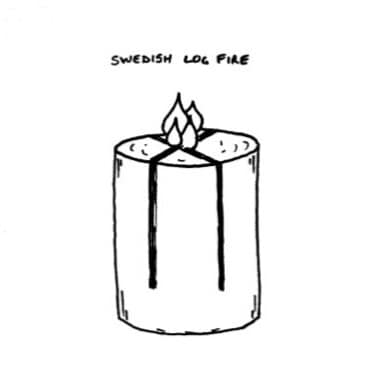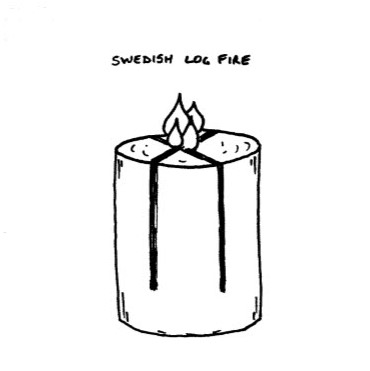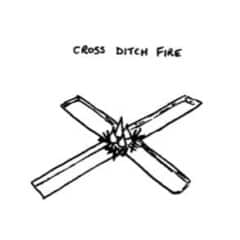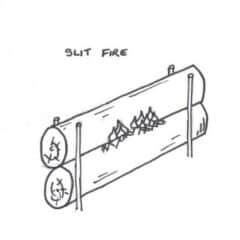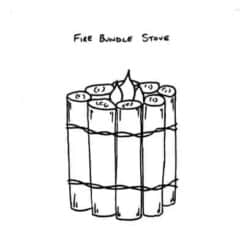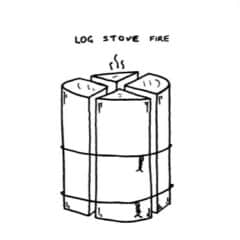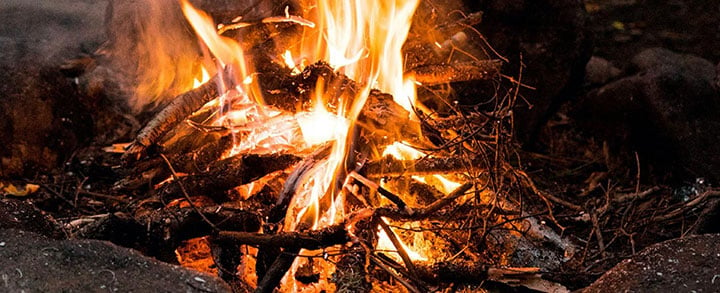The Swedish Log Fire comes from the German name ‘Schweden Fackel’, which translates more to Swedish Fire Torch, but it also has been called a ‘Swedish Log Stove’ and ‘Swedish Log Candle’. It is beautiful in its simplicity, and if you have the right wood and tools around, it is definitely worth having a go at.
The hardest part for the average camper is making the cuts into the log which are best done at home then bringing the result to your outdoor adventure. Alternatively, you can make at camp, if you are at the type of outdoor adventure that has a chain saw.
Once made and burning well these are a very efficient way to cook one pan meals, especially frying and boiling. A wonderful characteristic of this fire is that you can pick it up and move it to another location with relative safety.
How to Build a Swedish Log Fire
1/ Assess the location. Just because this fire is simple and portable doesn’t mean you can light it anywhere. As always consider the surroundings for fire hazards, wind direction and similar.
2/ Create the Log. Select a stable log that stands on its end well and is cut well so that the other end is also flat and stable so it can safely support your pot or pan. The log itself should be well dried, unlike some fires this may be of a lighter soft wood as we want it to burn quick and easy, some heavy hard woods can extinguish themselves.
Safely place the log and get someone experienced with a chainsaw to cut a cross into a log. For diameters up to about 10 inches / 25 cm two cuts to create 4 segments is enough. For logs greater than this cut 3 times to create six segments. The cuts go approximately 4/5ths of the way down through the log, the remaining 1/5th helps the log to hold together while burning.
3/ Lay the fire. This fire can be successfully lit by using very fine tinder and shavings placed into the cracks. For this design however often the easiest way to light it is to use a fire lighting fluid poured into the cracks.
4/ Light the fire. The tinder (or lighter fluid) should be lit near the base of the cuts allowing it to burn up into the remainder of the log. It should be lit at least 20 minutes before wanting to cook on it so it has time to really catch and become established.
5/ Maintaining the fire. Unlike normal fires, this fire has a specific amount of wood that will be burnt, once done, the fire is done. There is no wood tending required. If having issues burning consider repositioning in relation to the wind to either remove strong wind in a lee, or place in a breeze of increase oxygen.
6/ Extinguishing the fire. This fire can be left to burn out into itself, or splashed with water to extinguish.
